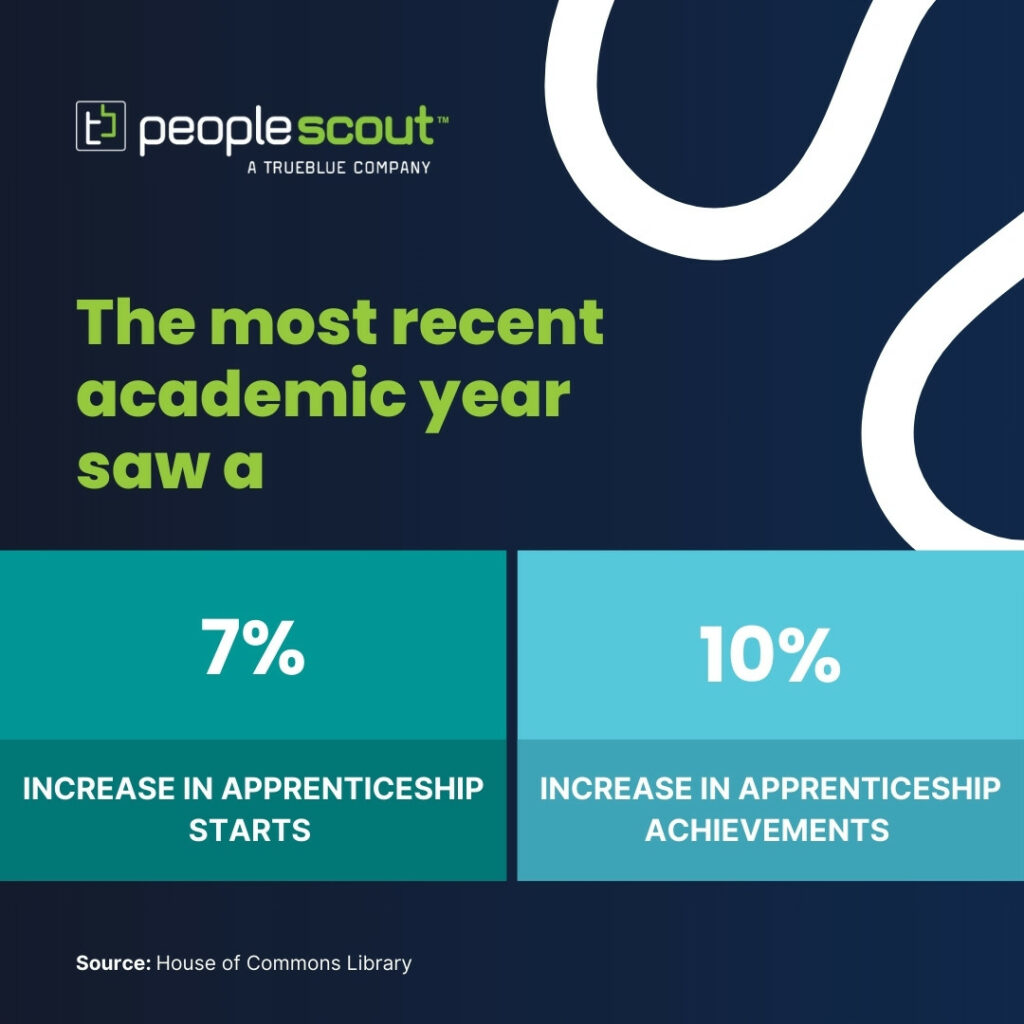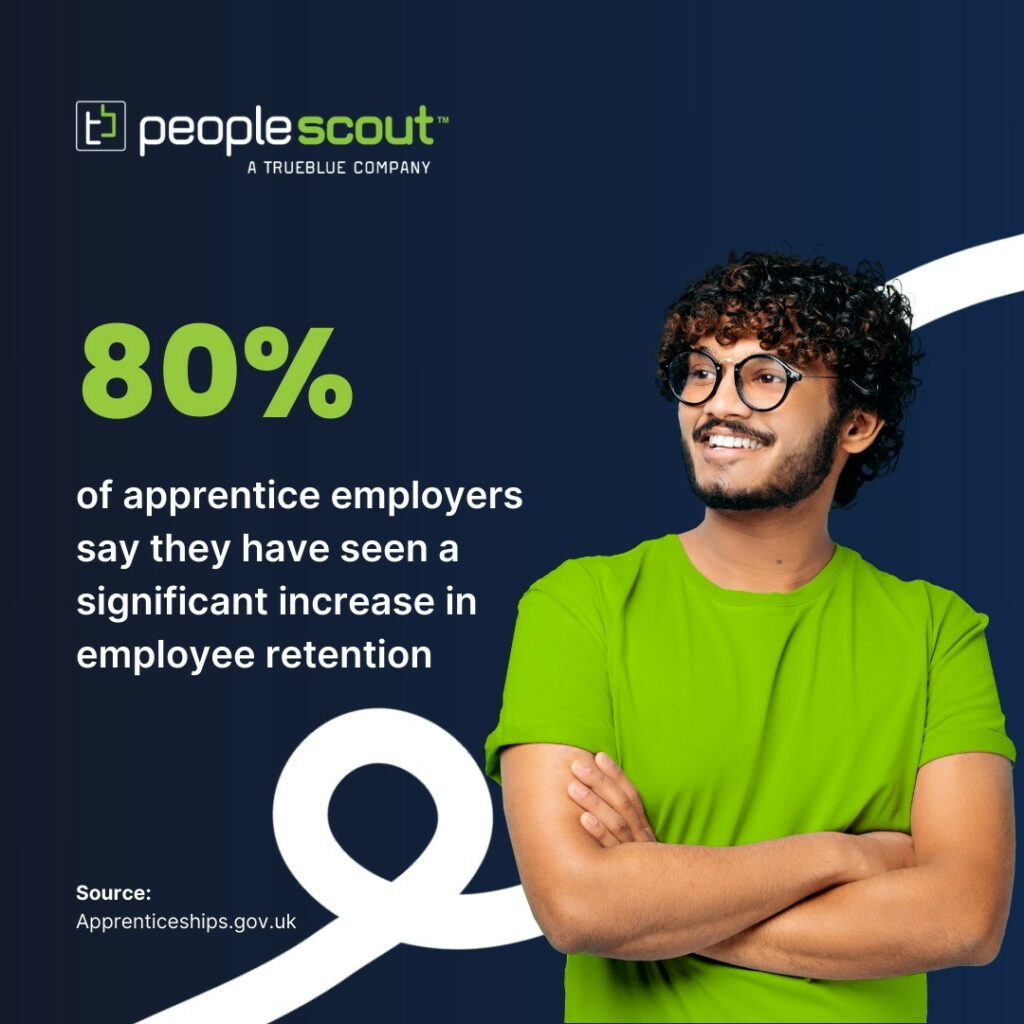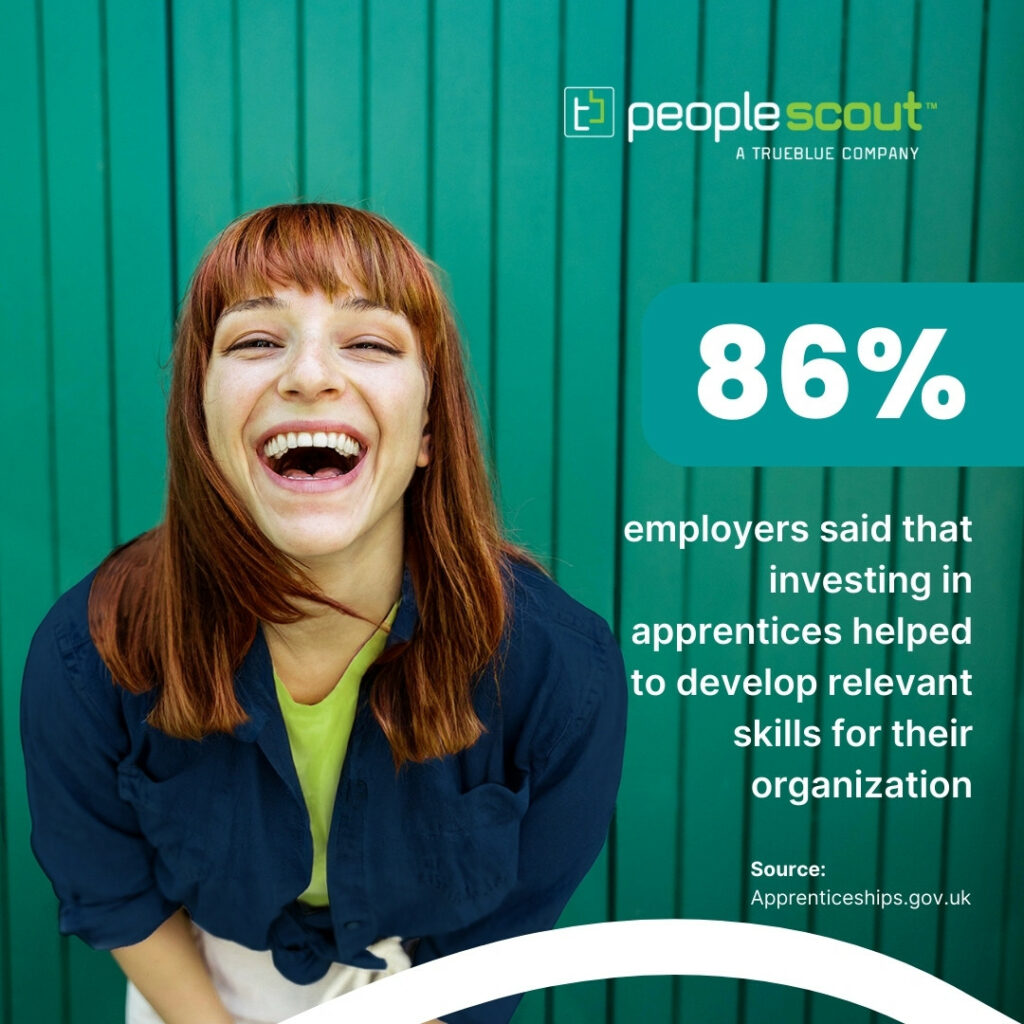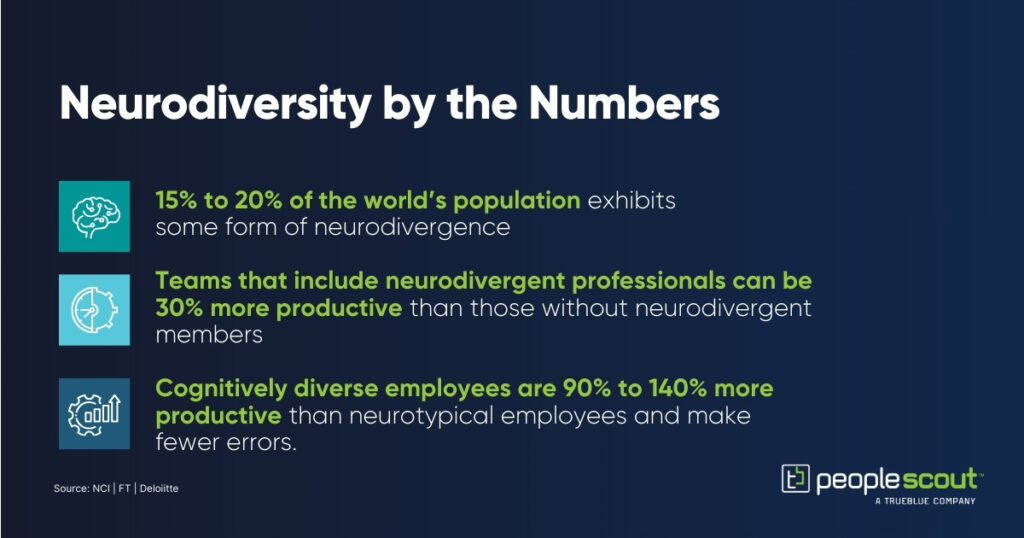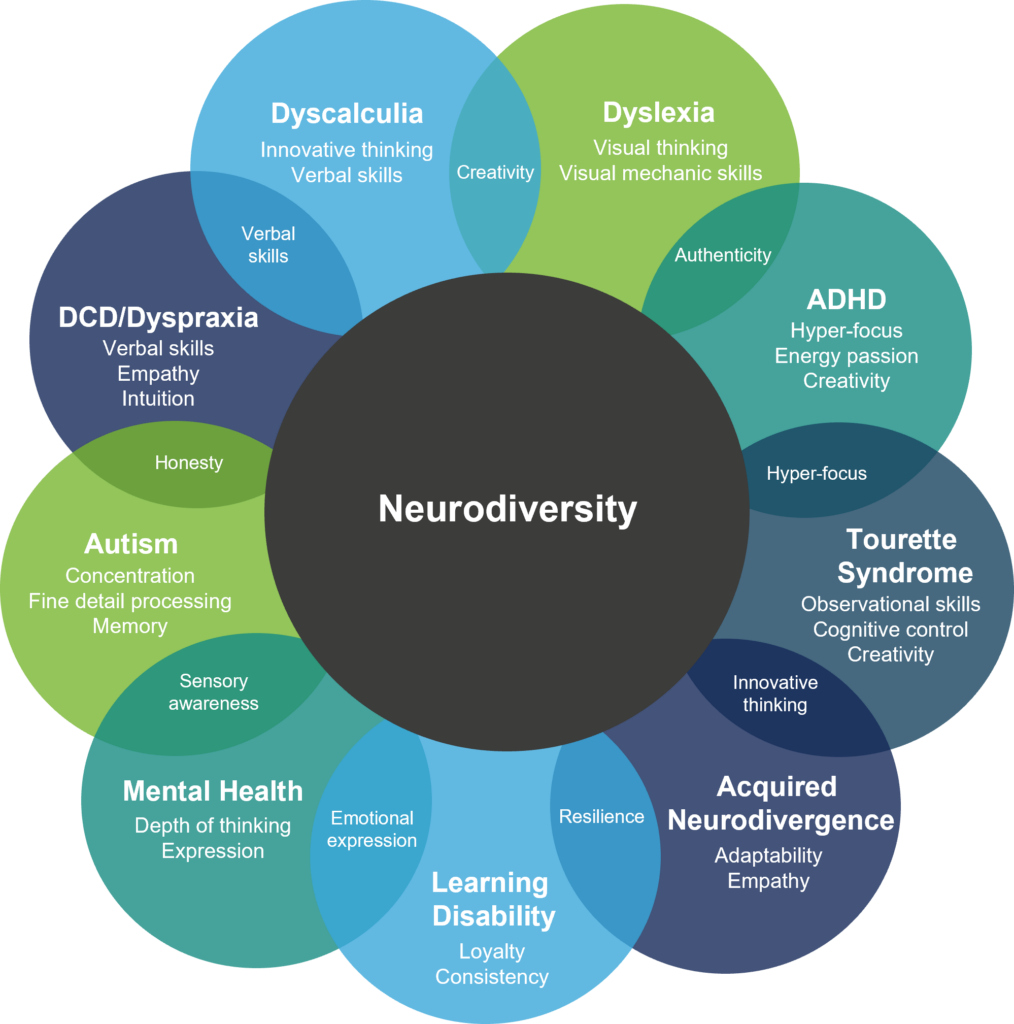By James Chorley, Talent Solutions Director
My children are about eight to nine years away from entering the world of work. As a parent, it’s both exciting and daunting to think about the future careers of my children. With rapid advancements in technology and shifts in the global economy, the job market of today will undoubtedly look very different in 10 years when my kids are entering the workforce.
While automation will displace many jobs, it will also create new jobs, generating significant benefits for businesses and economies by lifting productivity and economic growth. According to the World Economic Forum’s Future of Jobs Report 2025, by 2030, the creation of 170 million new jobs (14% of today’s employment), offset by the displacement of 92 million current jobs (8%), will result in net growth of 78 million jobs (7%).
For organisations with early careers programmes, understanding these shifts is crucial. The pipeline of emerging talent will need different skills, experiences and expectations than previous generations in order to have the capabilities necessary drive organisational success in the coming decades. Here are some key insights into how the changing job landscape will impact early careers programmes, the types of roles that will emerge and how to prepare the next generation of talent.
Jobs That Might Disappear
As technology continues to evolve, several traditional roles are projected to decline significantly:
- Postal Workers: The rise of digital communication methods and automated sorting systems are already reducing the reliance on traditional postal services. The World Economic Forum identifies Postal Service Clerks among the fastest-declining roles in the job market.
- Print Journalists: The decline of print media and the shift towards digital news consumption has led to fewer opportunities for print journalists, with many news outlets now digital-first or entirely online.
- Community Banking: The increase in online banking, mobile banking apps and ATMs has reduced the need for in-person bank tellers. Bank Tellers are among the fastest-declining roles globally.
- Travel Agents: Online travel booking platforms and AI-driven travel assistants are making traditional travel agent roles less common.
- Taxi Drivers: The rise of ride-sharing apps like Uber and Lyft, combined with the development of autonomous vehicles, could significantly reduce the demand for traditional taxi drivers.
- Telemarketers & Customer Service Reps: AI-driven customer service and sales platforms, along with stricter regulations on telemarketing, are reducing the need for human telemarketers and customer service workers, often a common first job for many young professionals.
- Librarians: Digital libraries and online information resources are diminishing the need for traditional librarian roles, though there will still be a need for digital information specialists.
- Factory and Assembly Line Workers: Robotics and advanced manufacturing technologies are increasingly handling tasks that once provided steady employment for those entering the workforce without higher education.
- Data Entry Clerks: The World Economic Forum lists Data Entry Clerks among the jobs seeing the largest decline due to automation and AI advancements.
- Retail Cashiers: The rise of e-commerce and self-service kiosks in retail stores are diminishing these roles, which have historically provided flexible employment for students and recent graduates.
Whilst some of these roles may not be considered ‘career roles’, they are an important step on the work ladder for early careers talent. Before I found my feet and whilst still deciding what I wanted to do, I had a number of temp roles doing data entry, customer service and telemarketing. Declining numbers in these roles that have historically served as steppingstones for early careers talent could have significant impact on early careers employees and employers.
Impact on Early Careers Programmes
The decline in these traditional entry-level roles presents significant challenges for early careers recruitment strategies:
- Shrinking Entry Points: Many traditional entry-level positions for graduates and school leavers are disappearing. This means fewer natural entry points into organisations, requiring companies to create more structured early careers pathways.
- Skills Gap Widening: As routine tasks become automated, the skills gap between education and employment is growing. Entry-level roles increasingly require more advanced technical skills and digital literacy from day one.
- Higher Expectations for Early Talent: With fewer administrative or process-driven roles available, early careers talent is expected to add value more quickly, often needing to demonstrate complex problem-solving and critical thinking skills immediately.
- Reimagining Work Experience: Companies must rethink work experience, internships and placement years to provide meaningful exposure to emerging technologies and future-focused skills that automation cannot easily replace.
- Increased Competition: As traditional entry points decrease, competition for remaining early careers opportunities intensifies, making employer branding and candidate experience more critical than ever.
To address these challenges, early careers programmes must evolve. Talent acquisition leaders should consider creating rotational experiences that expose emerging talent to a variety of business functions, developing accelerated digital upskilling programmes, and establishing mentorship opportunities that help bridge the experience gap.
Jobs That Will Significantly Change for Early Careers Talent
According to McKinsey Global Institute, at least 30% of work activities that could be automated for about 60% of occupations. Rather than complete displacement, many entry-level and early career roles will undergo significant transformation.
- Junior Healthcare Professionals: The integration of telemedicine, AI diagnostics, and wearable health technology are changing how healthcare is delivered. Early careers talent will need to be comfortable with digital patient management systems and telehealth platforms from day one.
- Teachers and Educators: The rise of online education, virtual classrooms, and AI-driven personalised learning experiences are transforming teaching. New educators will need to be proficient in digital tools and platforms, incorporating technology into their teaching methods and focusing on facilitating learning rather than just delivering knowledge.
- Manufacturing and Production Workers: Technological advancements in AI, robotics, and automation will drive both job creation and decline, with manufacturing roles evolving to focus more on overseeing and maintaining automated systems. Early careers talent in this sector will need skills in robotics, programming and systems management rather than traditional manufacturing processes.
- Financial Graduates: AI and advanced analytics will handle much of the data processing and routine analysis that junior finance professionals typically managed. Early careers talent will need to focus on interpreting data and providing strategic insights rather than data gathering. The World Economic Forum notes that Fintech Engineers are among the fastest-growing jobs in percentage terms, representing a shift in early financial careers.
- Supply Chain Coordinators: With the rapid expansion of e-commerce, warehousing jobs have grown 61% in the last decade. At warehouses, depots, and logistics centres throughout the supply chain, there is a growing need for human workers with the skillsets necessary to manage a more complex, interconnected and tech-enabled supply chain.
These changes highlight the increasing importance of digital literacy, adaptability and continuous learning for early careers talent. The traditional learning curve for new graduates is getting steeper, with expectations to contribute meaningfully to technology-driven processes from the beginning of their careers.
Emerging Early Career Opportunities
Much as technologies of the past have done, automation will create new entry-level occupations that do not exist today. Here are some promising examples of future job opportunities for early careers talent:
- AI and Machine Learning Specialists: According to the World Economic Forum, AI and Machine Learning Specialists are among the fastest-growing roles. Early careers talent looking to enter these professions need a strong background in computer science, programming, statistics and data analysis. Companies are increasingly creating graduate pathways specifically for these roles.
- Cybersecurity Analysts: The World Economic Forum ranks networks and cybersecurity among the top three fastest-growing skills. Entry-level roles in this field are expanding as organisations build security teams to protect expanding digital infrastructure. Early careers talent should focus on network security, ethical hacking, risk management and security compliance.
- Sustainability and Environmental Specialists: With 47% of employers expecting climate-change mitigation to transform their business in the next five years, organisations are creating early careers paths in sustainability. Entry-level roles supporting renewable energy engineers and environmental specialists represent growing opportunities for graduates with relevant knowledge.
- Data Analysts and Data Scientists: Big Data Specialists are among the fastest-growing jobs in percentage terms. Early careers programmes in this area are expanding rapidly, seeking talent with skills in data mining, statistical analysis, programming and data visualisation.
- Remote Work Support Specialists: According to the World Economic Forum, 83% of employers plan to provide more opportunities to work remotely, creating significant demand for professionals who can support distributed workforces. These roles represent new entry points for early careers talent with strong organisational skills and digital communication tools proficiency.
- Health and Wellness Coaches: Supporting employee health and well-being is becoming a strategic priority, with 64% of employers identifying it as key for talent attraction. Early careers talent with knowledge in nutrition, fitness, mental health awareness and coaching may find entry-level opportunities across sectors.
- Robotics Engineers: With 58% of employers expecting robotics to transform their business by 2030, early careers pathways are emerging for talent with skills in mechanical engineering, electronics, and programming. Graduate schemes specifically focused on automation and robotics are becoming more common.
- Virtual Reality (VR) and Augmented Reality (AR) Developers: LinkedIn data shows Game Designers and Game Developers grew by 58% and 40% respectively as the UK games sector hit record size during the pandemic. New entry-level positions for those with skills in 3D modelling, design and user experience are emerging. These roles often don’t require extensive experience, making them accessible to recent graduates.
- Sustainable Agriculture Technicians: The focus on climate change adaptation is driving innovation in food production systems, creating entry-level roles in agricultural technology. These positions offer opportunities for graduates interested in agricultural science, hydroponics, and sustainable practices.
- Blockchain Developers: Financial institutions and technology companies are developing entry-level pathways for those with knowledge of blockchain technologies. Early understanding of cryptography, programming, and distributed ledger technology can position graduates for these emerging roles.
- Drone Operators and Technicians: Industries from construction to energy are creating new positions to support drone operations, data collection and analysis. These roles provide early career opportunities in a growing field without requiring extensive experience.
- Genomic Counsellors: The growth in healthcare specialisations will continue to evolve as healthcare becomes more technology driven. Genetics, biology, and ethics will be areas of entry for early careers talent.
For early careers programmes, these emerging roles represent opportunities to create specialised graduate pathways that attract top talent in competitive fields. Talent acquisition leaders should consider developing targeted recruitment campaigns that highlight these future-focused opportunities to differentiate their employer brand.
Essential Skills for Early Careers Success
As occupations evolve alongside increasingly capable machines, early careers talent will need to develop a range of skills that may not be emphasised in traditional education. For talent acquisition leaders, understanding these skills is crucial for designing effective assessment and development programmes:
- Digital Literacy: Beyond basic computer skills, early careers talent needs a strong understanding of digital tools, platforms, and concepts. The WEF report identifies AI and big data as the top fastest-growing skills, followed by networks and cybersecurity. Early careers programmes should incorporate digital assessments and training from day one.
- Critical Thinking and Problem-Solving: With routine tasks automated, analytical thinking remains the most sought-after core skill among employers, with seven out of 10 companies considering it essential. Assessment centres and selection processes should prioritise these capabilities over technical knowledge that can be taught.
- Adaptability and Lifelong Learning: The WEF report highlights that workers can expect 39% of their existing skill sets to become outdated by 2030. Early careers talent with demonstrated learning agility and curiosity will be better positioned to evolve with their roles. Graduate programmes should emphasise continuous development rather than fixed skill sets.
- Emotional Intelligence: As automation increases, uniquely human skills such as empathy, communication, and teamwork become more valuable. The WEF identifies resilience, flexibility, and leadership as among the most sought-after core skills. Early careers development should focus on these interpersonal capabilities alongside technical training.
- Environmental Awareness: Understanding sustainability issues is increasingly important across sectors. Environmental stewardship has entered the list of top 10 fastest-growing skills for the first time, driven by climate-change mitigation trends. Early careers programmes should incorporate sustainability awareness regardless of function.
For talent acquisition leaders, these skill requirements necessitate a shift in assessment approaches. Moving away from traditional competency frameworks toward evaluating learning potential, adaptability, and critical thinking will be essential for identifying successful early careers talent.
Reshaping Education & Early Careers Development
McKinsey’s research suggests that by 2030, 75 million to 375 million workers globally will need to switch occupational categories. This has profound implications for how organisations approach early careers development and partner with educational institutions:
- STEM Subjects: Science, Technology, Engineering, and Mathematics subjects provide the foundation for many future roles. Early careers programmes should consider developing partnerships with universities to influence curriculum design and create clear pathways from STEM degrees into organisations.
- Interdisciplinary Approaches: LinkedIn data shows high demand for roles requiring a mix of technical and human skills. Graduate schemes that rotate early careers talent through both technical and commercial functions can develop this valuable blend of capabilities.
- Environmental Focus: With sustainability becoming business-critical, early careers programmes should incorporate green skills development regardless of function. This could include sustainability projects, environmental impact assessments, or dedicated learning modules.
- Ethics Understanding: As technology raises complex questions, early careers talent needs to understand ethical implications of business decisions. Development programmes should include ethical case studies and discussions, particularly for those working with advanced technologies.
- Accelerated Digital Upskilling: Rather than assuming tech and digital skills will develop over time, organisations should front-load technical training in early careers programmes to enable faster productivity and contribution.
For talent acquisition leaders, this means reimagining traditional graduate development approaches. Annual intake models may give way to more frequent, specialised recruitment aligned to emerging skill needs. Development pathways will need to become more personalised, with greater emphasis on continuous learning rather than prescribed programmes.
Preparing Emerging Talent for the Future
The landscape for early careers talent is changing dramatically. Traditional entry-level roles are disappearing or transforming, while entirely new career paths are emerging. For talent acquisition leaders, this presents both challenges and opportunities to reimagine how organisations attract, develop and retain emerging talent.
Success in this evolving environment requires a fundamental shift in approach—moving from standardised graduate programmes toward more agile, personalised development journeys that emphasise continuous learning and adaptability. Organisations that create clear pathways into emerging fields, develop innovative assessment approaches, and build strong educational partnerships will gain significant competitive advantage in the talent market.
For the next generation entering the workforce, including our children, these changes promise exciting opportunities to build careers that may look very different from those that came before—careers that may not even exist yet. Our role as talent acquisition leaders is to help them navigate this uncertainty, providing early careers programmes that prepare both emerging talent and our organisations for a rapidly changing future.
When it comes to advising my kids on their future and the subjects they want to follow, it’s not straightforward. But as my Auntie once told me, you’ll be surprised just how much you will learn from your children. Kids are curious, and they aren’t stuck in historical thinking and norms. Our job is to guide them and encourage them to stay curious as we watch the world change!

